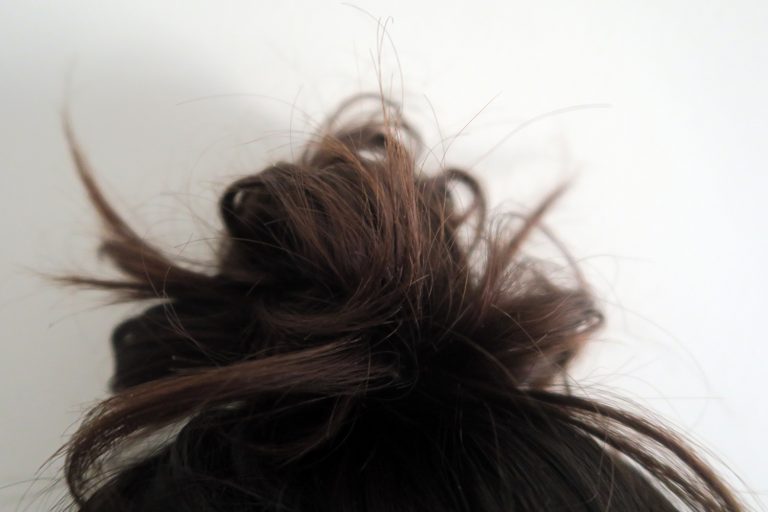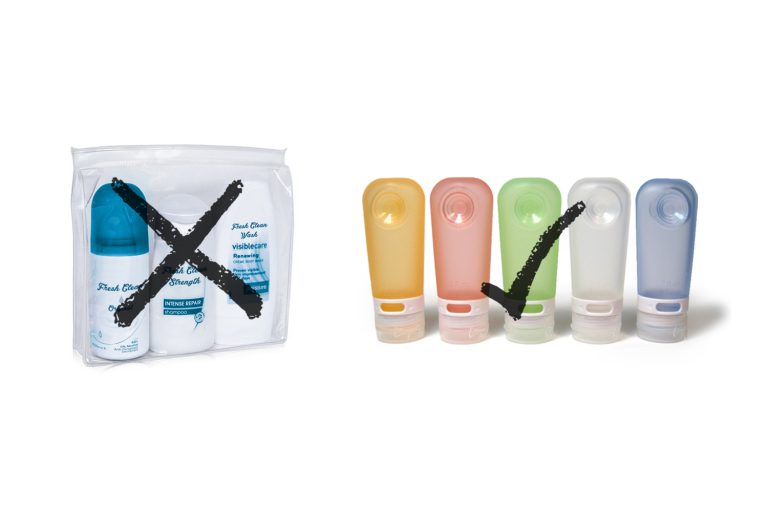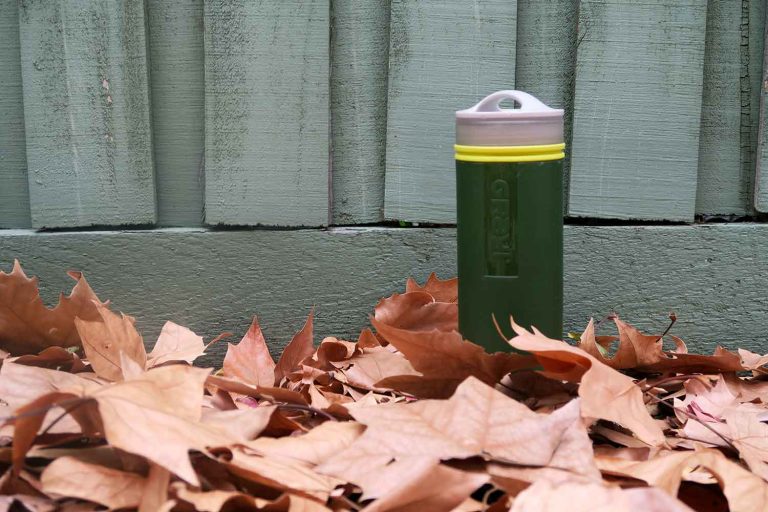Bokashi Bin Review: An Indoor Composting Solution?
Food waste is a concerning global issue and it starts in your very own kitchen. This Bokashi Bin review will cover some of the ways you can adequately dispose of some of your own food waste.

Although there are many creative things you can do with your off-cuts, at some point, you’ll have to dispose of them in some manner. Rather than send them to landfill, the practical solution is to compost them.
Yet, what about those of us who live in apartments? Particularly when you don’t have any kind of garden to speak of and so have nowhere to compost your food scraps.
This is the dilemma that I face. I did have a worm farm that I constructed in 2017. I kept it in the garage of my old house, where it seemed quite happy.
My new flat however, didn’t have a garage, so I stashed them under the communal staircase. Which was all well and good until someone THREW MY WORMS IN THE BIN or something, I guess wondering why a resident was storing what looked like a box full of dirt under the stairs. Well, great. Apartment life, yo. Poor Betty.
Shortly after moving into my flat and doing some research, I invested in a Bokashi Bin. It seemed like the perfect solution, as it is reputed to let off no smell and it fit nicely into my kitchen.
This particular Bokashi Bin review has been written ten months after using the item. It seemed like a good amount of time to test and trial it, so here we are!
Read more: 7 Benefits of a Plastic-Free Lifestyle
Get Around Quickly
How Does the Bokashi Bin Work?
The bin is really simple to use.
You add your kitchen scraps, sprinkle in some of the bokashi mix and press it all down firmly (you can use a potato masher for this) to get rid of air bubbles.
The scraps go through a fermentation process, where “bokashi juice” collects at the bottom of your bin, which you can empty out via an attached tap.
After your bin has filled up (which can take 4-6 weeks), you bury the fermented scraps in the garden, or add it to your own compost.
The juice is said to be good to use as fertiliser, but I found it too strong for my indoor plants, even when diluted (it killed off my thyme… sob). I’ve been using it as a drain cleaner, or gifting it to people with bigger actual outdoor gardens, unlike my collection of pots.
Read more: A Year of No Plastic: The Final Result

Is the Bokashi Bin Worth It?
In all honesty… if I wasn’t living in an apartment, I probably wouldn’t use or really need a Bokashi bin. There are aspects of it that are difficult to work with, the first and foremost being the issue of where to bury the fermented waste.
This can seem like a bit of an unbreakable circle, as most people living in a unit wouldn’t have a backyard to bury the waste in to begin with. Hence, the need for an indoor composting system. Huh.
I found a solution, in contacting my local council to inquire about community gardens in the area. Turns out, there’s one right behind my apartment block.
I got in touch with the garden itself and they were fine with me popping my bokashi waste in the park next to the garden, even providing a shovel for the cause (until it got stolen, sigh). In time, they hope to expand to accommodate this area and the extra nutrients from the food waste are a welcome addition.
You’ll find other community gardens will have compost bins and will allow you to chuck your food waste into the mix. In this respect, it seems like the most obvious thing to do is to freeze your food waste in bags, then take it to the garden to dump in one fell swoop.
Many community gardens however do have restrictions on what you can put in their own compost, such as meat, citrus fruits, dairy and bread.
This is because many garden composts contain worms and worms are fussy about what they can and can’t eat. For this reason (and through trial and error from my own efforts) a worm farm is not enough if you want to get serious about home composting and you’re in a small space.
Too, some gardens are only open at certain times of the day and it can be difficult to access them around your working schedule.
So, after giving the Bokashi a run for some months now, my conclusion is it solves quite a few of the problems that one encounters when they try to compost at home… but it creates a few as well.
It all comes down to the individual and their own circumstance. The Bokashi Bin is perfect for me in my current situation – yet, it may not work for everyone.
I’m going to break the rest of this article into a serious of pros and cons, so you’ll have a thorough understanding of what to expect when using a Bokashi bin, in order to decide for yourself whether it’s right for you.
Read more: Is This the Holy Grayl of Purifying Water Bottles?

Bokashi Bin Review: The Good
Here are some of the better points of the Bokashi composting system.
I like that I can put everything in it
I loved my worms, but I couldn’t feed them all of my kitchen scraps, as they get fussy about citrus and onion.
I simply don’t have the space for an intricate composting system in my current flat. So, I appreciate the fact that anything can go in the bin and ferment away and is getting repurposed rather than being sent straight to landfill.
It’s small
The Bokashi Bin really doesn’t take up much room at all.
I keep it in the kitchen, next to my garbage bin (haven’t quite got to the point where I don’t need one at all unfortunately, but at least it takes awhile to fill up now).
When you’re in a tiny flat and space is of essence, these factors are important.
It doesn’t smell
As long as you keep the lid firmly on and the tap tightly closed, no smell will emit from the bin. When you do open it, it smells a bit fungus-like, which doesn’t really bother me too much. The smell quickly disperses once closed again.
I did have an issue with my tap for a little while where it seemed to be leaking (not pleasant). I got in touch with Bokashi One and they sent me a replacement within a week.
It’s a fine thing to have on hand if you have a backyard or live near a community garden
Disposing of the waste is definitely the biggest issue facing this bin. It would be pointless if you had nowhere to bury it.
So, if you have even a small patch of backyard available or a garden very close up, this system will work for you.
Read more: 10 Tips for Living Zero Waste in Big Cities

Bokashi Bin Review: The Bad
Here’s what I don’t like about the Bokashi Bin.
You may have to buy the Bokashi Mix
It is a bit annoying having to continually make financial investments in the Bokashi Mix. It’s said you don’t need it, but it helps speed up the fermentation process.
At the very least, the mix lasts a long time, as you only need to sprinkle around 1 to 2 heaping tablespoons of it for every inch of food waste.
You’ll know if you’re not putting enough mix in, if you have blue or black mould appear (white is apparently okay) or it smells utterly putrid when you open it up.
I didn’t like that the original mix that accompanied my bin purchase came in plastic, but you can buy 4kg hessian sacks, which are able to be composted once the bags are empty.
It’s not actually composting
I do find it to be a bit misleading, as it’s actually a fermentation process, not composting. You’re effectively pickling your food waste – it’s not breaking down, until planted in the garden.
It can be quite heavy to carry to the garden
Even though in an environmental sense it’s a step backward, buying a car has solved a lot of issues for me.
I pop my bin in the boot and zip it around to the community garden to bury it.
I did empty it a couple of times before I had a car and… ho, boy. It’s heavy when it’s full.
I guess I’m getting rid of my food waste and getting an arm workout in at the same time, so that’s one way of giving it a positive spin.
Many apartment dwellers won’t own a shovel
I was lucky in that my community garden provided a shovel for awhile, but when that disappeared, I snapped and bought my own. I keep it in the bathroom, along with my gardening gloves. I do plan on having a small garden one day, so I’m not bothered by this.
I get that not every apartment-dweller will own a shovel. A garden trowel will do the job, but it’s a bit of a pain to dig with.
Read more: Eco Friendly Travel Products: 36 Handy and Helpful Items

Where can you get a Bokashi Bin?
As I’m Australian, I use the Bokashi One Bin.
I personally bought mine from Biome, a really wonderful Australian store which services many of my plastic-free needs. Here it is in black and in tan and green. As an added bonus, shipping is free for orders over $75.
Shop for a Bokashi Bin at Biome | Amazon
I do thoroughly recommend checking out Gumtree or Facebook Marketplace to see if anyone is selling one cheaply in your area.
As for the grains, I buy them online from Biome. They offer 4kgs in hessian bags, which can be composted when empty. Plus, it lasts an epically long time.
Conclusion: Does Bokashi work?
Yes. Or at least, it works for me.
What I like best about my Bokashi Bin is that it saves me space and I can dispose of it in my own time.
While there is the solution of just freezing my food waste and taking it round to the community garden, I have a tiny place, with a tiny fridge and this would fill up my freezer space fast.
I like that I can keep my food waste incubating stink-free in the corner for 4-6 weeks, to empty at my own discretion. Plus, I no longer have to spend any money on drain or toilet cleaner!
However, if I were to move into a bigger place with a proper garden, I would set up a proper compost system rather than use the Bokashi Bin, or bury my food waste into the garden.
So in summary, it’s a good solution that suits my lifestyle as a garden-less flat dweller, for now.
So that’s my Bokashi Bin review. What do you reckon? Do you use a Bokashi bin? What are your thoughts on it?
Please note: I was NOT given a Bokashi bin to review, I paid for it out of my own pocket. Read my disclosure if you require more information.








When I was researching composting methods for apartment dwellers, I came a across the Bokashi bin which intrigued me. Definitely hadn’t heard anyone mention it as pickling rubbish! ( I had a chuckle). The cons you listed are consistent with what I had read too.
I was going to suggest community gardens initially as I was reading this and then you mentioned it. I think community gardens are such a great idea and hope to see more in the future. Some of the ones I’ve seen are quite impressive!
I love community gardens too! I wish there were more in urban areas, but at least they seem to be growing in popularity.
Thanks for the review – It sounds like you’re living somewhere pretty rough though! your worm farm got chucked, your shovel got stolen – Mate!!!
I know right?! The joys of the inner city.
Hi LC! I’m thinking of using a Bokashi and a small worm farm system on my balcony for my food waste in my Sydney apartment. Have you tried using the fermented waste from the Bokashi into a worm farm?
Also, how was the build quality of the Bokashi One bin? I’ve found a few Bokashi bins in Australia and I can’t tell which one is best built – I just want to make sure the quality of the lid and tap are good and stay sealed.
Hi Diego! I haven’t used the waste in a worm farm. I’m not sure how it would go down, as worms are quite fussy with what they can eat. Might be worth considering bypassing the Bokashi system and setting up a small balcony compost instead? So long as it’s getting enough oxygen, it shouldn’t smell (I like the smell of compost – might not be a popular opinion!).
I don’t mind the Bokashi One bin, it seems pretty sturdy (haven’t tried any other brands so can’t really compare it with anything). I thought I’d had an issue with the tap leaking, contacted the company and they sent a replacement tap. I liked that about them!
Just go mine and I can’t get the lid off?? Waiting for the company to reply. Hope I don’t have to wrestle with it each time I open the lid.
Oh, odd! Hope it gets sorted.